#LA PLANTE ET SES APPLICATIONS ORNEMENTALES
Text

#art nouveau#eugene grasset#floral pattern#LA PLANTE ET SES APPLICATIONS ORNEMENTALES#chrysanthemum#mum#chrysanth#border#wallpaper#chandelier
23 notes
·
View notes
Text



Snowdrops by M.P. Verneuil taken from 'La Plante et ses Applications Ornementales' by Eugène Grasset, M. P. Verneuil.
Published 1896 by Librairie Centrale des Beaux-Arts.
Smithsonian Libraries
archive.org
396 notes
·
View notes
Text

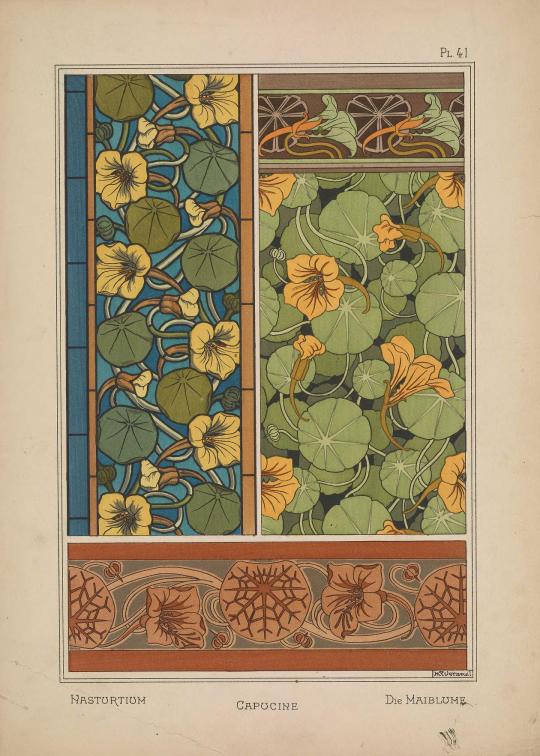
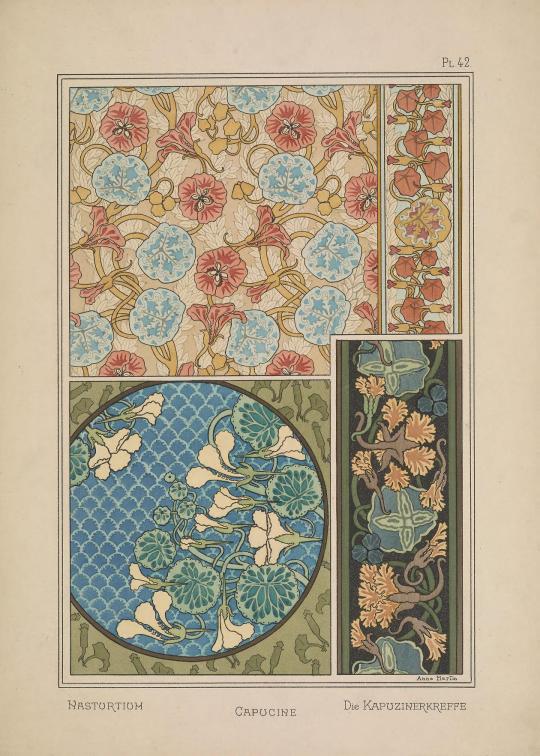
Capucine (Nasturtium)
La plante et ses applications ornementales, ed. Eugène Grasset
Plates 40 & 41 by M.P. Verneuil, and Plate 42 by Anna Martin.
25 notes
·
View notes
Text

Chromolithographic patterns from La Plante et ses Applications Ornementales (1896)
5 notes
·
View notes
Text
Septidi 17 Ventôse an CCXXII
(mercredi 17 mars 2024, Wenesday march 17, 2024)


Le mois de Ventôse dans le calendrier républicain français, correspondant généralement à la période entre le 20 février et le 20 mars, symbolisait le début de la transition vers le printemps. Associé au vent, ce mois était marqué par les premiers signes de renouveau et d'activités agricoles, préparant le terrain pour la saison à venir.
Le 17 Ventôse dans le calendrier républicain, également connu sous le nom de "jour de la doronic", est une journée dédiée à la doronic, une plante médicinale de la famille des Astéracées. Cette plante, scientifiquement appelée "Doronicum", est réputée pour ses propriétés médicinales et ses utilisations diverses en herboristerie.
La doronic est traditionnellement utilisée pour ses vertus thérapeutiques, notamment pour ses propriétés anti-inflammatoires, antispasmodiques et digestives. Elle est souvent employée pour soulager les maux d'estomac, les problèmes digestifs et les douleurs musculaires.
Au-delà de ses applications médicinales, la doronic est également appréciée pour sa beauté ornementale. Avec ses fleurs jaunes vives, elle ajoute une touche de couleur et de vitalité aux jardins et aux espaces paysagers.
La journée du 17 Ventôse est donc l'occasion de mettre en lumière les bienfaits de la doronic, tant sur le plan médicinal que décoratif. C'est également une opportunité d'apprendre davantage sur les plantes médicinales et sur la manière dont elles peuvent contribuer à notre bien-être quotidien.
En résumé, le 17 Ventôse est une journée pour célébrer la doronic, une plante aux multiples facettes, qui allie à la fois beauté et utilité dans notre quotidien.
***
The month of Ventôse in the French Republican calendar, generally corresponding to the period between February 20th and March 20th, symbolized the beginning of the transition to spring. Associated with the wind, this month was marked by the first signs of renewal and agricultural activities, preparing the ground for the upcoming season.
On the 17th Ventôse in the Fench Republican calendar, also known as the "day of the doronic," is dedicated to the doronic, a medicinal plant belonging to the Asteraceae family. This plant, scientifically named "Doronicum," is renowned for its medicinal properties and various uses in herbal medicine.
Doronic is traditionally used for its therapeutic virtues, particularly for its anti-inflammatory, antispasmodic, and digestive properties. It is often employed to relieve stomach ailments, digestive problems, and muscular pains.
Beyond its medicinal applications, doronic is also appreciated for its ornamental beauty. With its bright yellow flowers, it adds a touch of color and vitality to gardens and landscaped areas.
The 17th Ventôse is therefore an opportunity to highlight the benefits of doronic, both medicinally and decoratively. It is also an opportunity to learn more about medicinal plants and how they can contribute to our daily well-being.
In summary, the 17th Ventôse is a day to celebrate doronic, a plant with multiple facets that combines beauty and utility in our daily lives.
#calendrier#calendrier républicain#calendrier républicain français#calendrier révolutionnaire#calendrier révolutionnaire français#france#français#révolution#ventôse#plante#fleurs
0 notes
Text

Nasturtium (Tropaeolum). La Plante et ses Applications Ornementales (1896) - Maurice Pillard Verneuil
#Wonder Rooms#Cabinet of Curiosities#Public Domain#19th Century#La Plante et ses Applications Ornementales#Maurice Pillard Verneuil#Botany#Plantae#Flora#Rosids#Brassicales#Tropaeolaceae#Tropaeolum#Nasturtium
83 notes
·
View notes
Photo






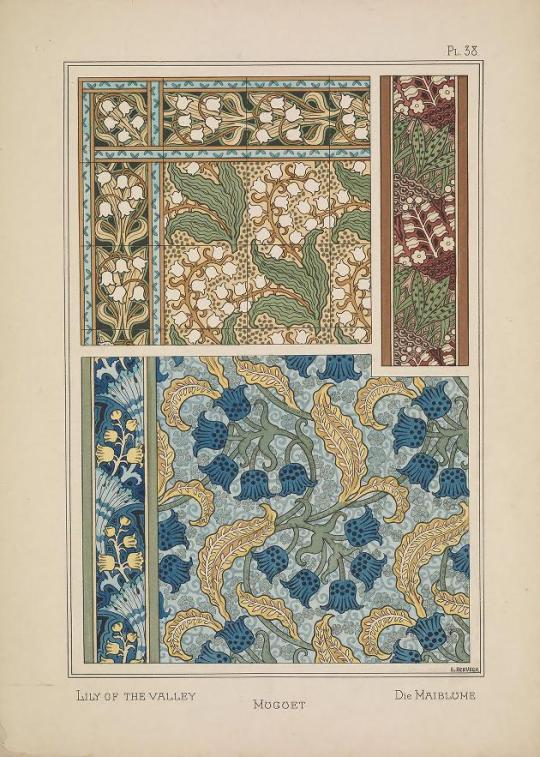
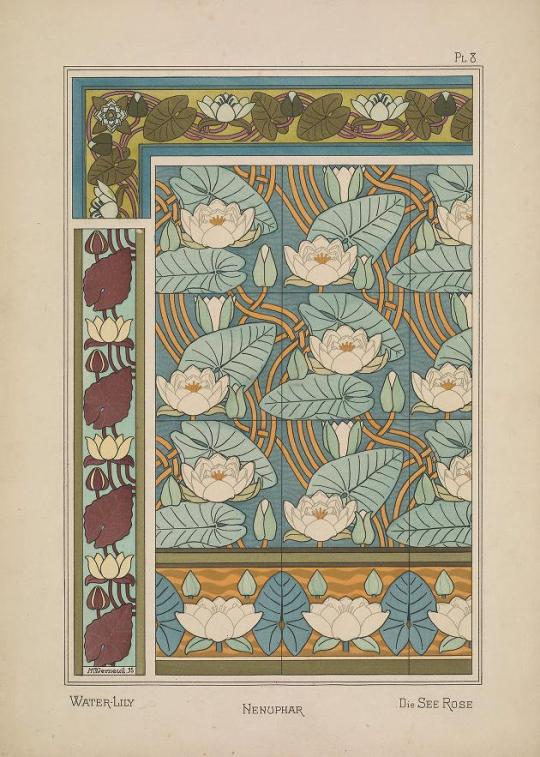

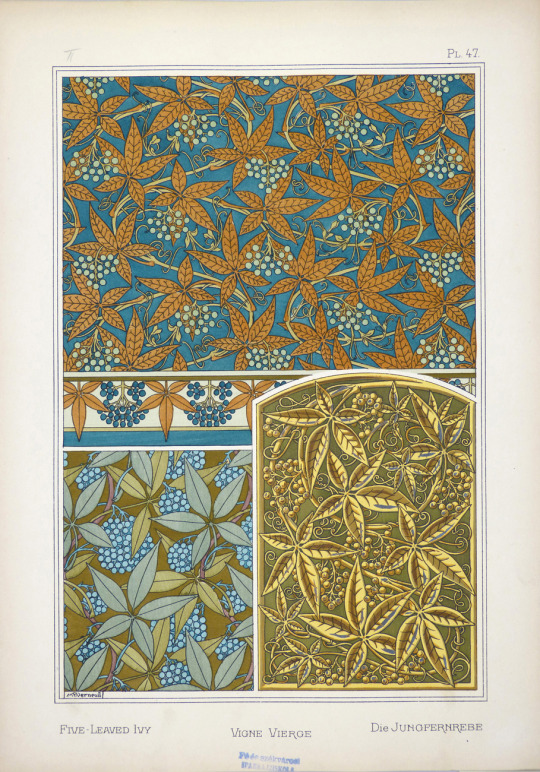
1. Chestnut tree 2. Snowdrop 3. Thistle 4. Dandelion Lithograph, by Juliette Milesi(1872-1959)
5. Nasturtium Lithograph, by Anna Martin(18??-19??)
6. Mistletoe 7. Lily of the Valley Lithograph, by Emma Hervegh(18??-19??)
8. Water Lily 9. Black cherry 10. Five-Leaved Ivy Lithograph, by Maurice Pillard Verneuil(French, 1869-1942)
from “La Plante et ses applications ornementales” sous la direction de M. Eugène Grasset(Swiss, 1845-1917)1896 here, here, and here
#Juliette Milesi#Anna Martin#Emma Hervegh#Maurice Pillard Verneuil#Eugène Grasset#art#design#illustraion
2K notes
·
View notes
Photo

Lily of the valley, 1896
La Plante et ses applications ornementales” sous la direction de M. Eugène Grasset, (Swiss, 1845 - 1917)
2 notes
·
View notes
Photo





📢 Have you heard? Last week, 2.8 million Smithsonian digital collections were added to the public domain. Among the #SmithsonianOpenAccess release are 12,000 digitized volumes from our library collections, available for you to use & re-use: https://www.si.edu/openaccess
A few highlights:
🌠Galileo’s Sidereus nuncius (“Starry Messenger”), 1610. The 1st printed account of his new discoveries by telescope, including mountains and valleys on the face of the moon, & the countless stars of the Milky Way.
🦋 Maria Sibylla Merian’s Metamorphosis insectorum surinamensium (1705). Both gorgeous and groundbreaking, Merian’s volume was the first to document insect lifecycles.
📖 Harriet Beecher Stowe’s 1st Edition of Uncle Tom’s Cabin (1852). One of the most important & popular books of the 19th century, exposing the appalling realities of American slavery. Soon to be on display in @nmaahc.
🌼 Eugène Grasset's La plante et ses applications ornementales (1896). A stunner of a book, Grasset's design patterns focus on plants and flowers. It was intended to promote the Art Nouveau style.
🤩 All are available for your enjoyment, research, remix, publication or other repurposing! Jump in and explore: http://collections.si.edu/search/index.htm
258 notes
·
View notes
Text

#jonquille#daffodil#Narcissus#jonquil#art nouveau#eugene grasset#LA PLANTE ET SES APPLICATIONS ORNEMENTALES#floral pattern#botanical pattern#stained glass#floral border
75 notes
·
View notes
Text

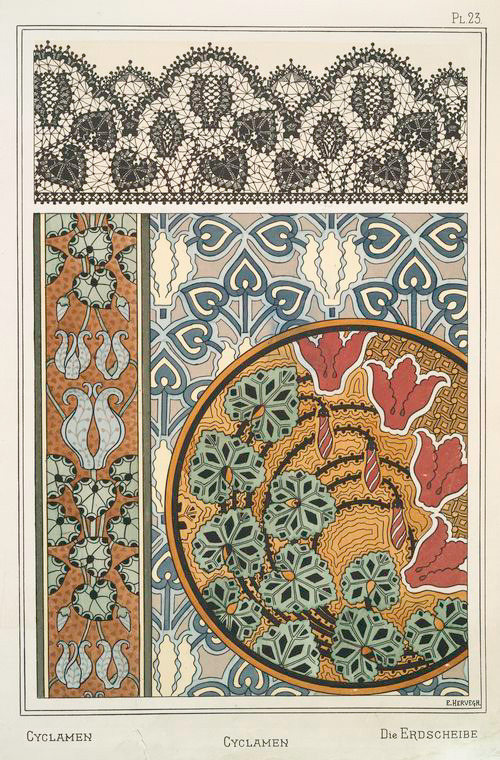

Cyclamen designs by E. Hervegh taken from 'La plante et ses applications ornementales' (1896) by Eugène Grasset.
Image and text information courtesy NYPL Digital Collection.
312 notes
·
View notes
Photo

Thistles from “La plante et ses applications ornementales” by Eugène Grasset and illustrated by Maurice Pillard Verneuil, 1896.
41 notes
·
View notes
Photo
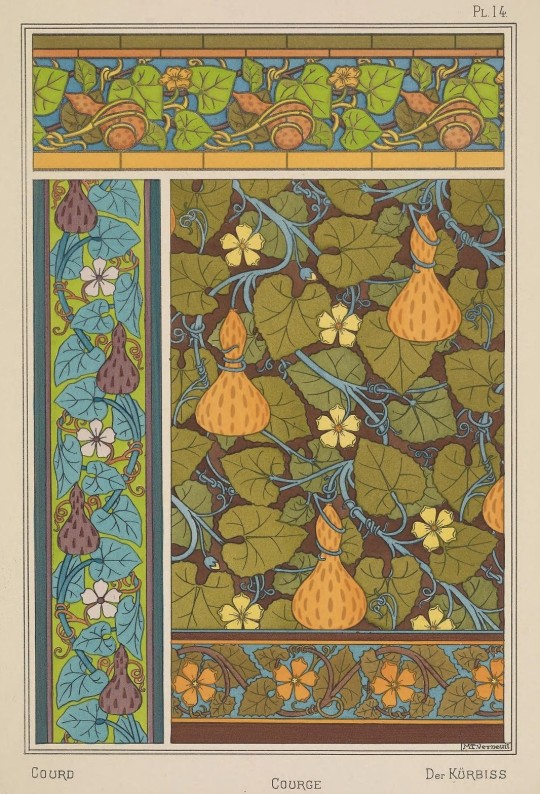
Botanic Monday: Ornamental Gourds
Explore the lovely patterns of SciArt in Eugène Grasset's La Plante et ses Applications Ornementales (1896). These gourds (family Cucurbitaceae) were drawn by Maurice Pillard Verneuil. View more in Biodiversity Heritage Library with thanks to @smithsonianlibraries for digitizing.
#Botanic Monday#gourds#Smithsonian Libraries#HistSciArt#BHLib#Biodiversity Heritage Library#decoration#ornament
51 notes
·
View notes
Photo
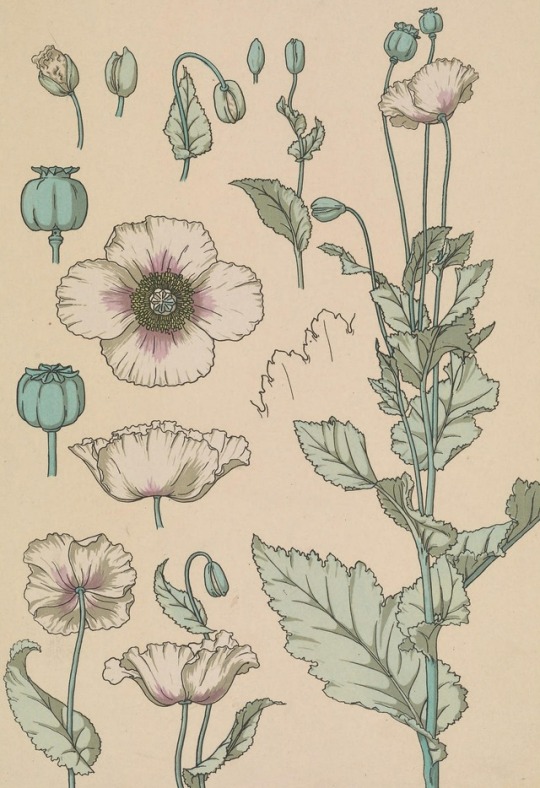
Maurice Pillard Verneuil - La plante et ses applications ornementales - c.1896 - via Internet Archive
388 notes
·
View notes
Photo

From Eugène Grasset’s La plante et ses applications ornementales,1897-9.
56 notes
·
View notes
Text




La Plante et ses Applications Ornementales (1896) - Maurice Pillard Verneuil
#Wonder Rooms#Cabinet of Curiosities#Public Domain#19th Century#La Plante et ses Applications Ornementales#Maurice Pillard Verneuil#Botany#Plantae#Flora
61 notes
·
View notes